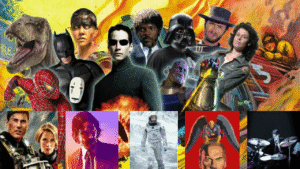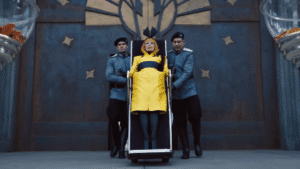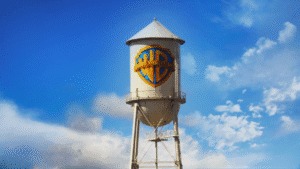“Mere paas maa hai.” These four words from Deewaar (1975) didn’t just define a scene, they defined an era. Bollywood dialogues have always been more than just lines; they are cultural milestones that resonate across generations. Some lines resonate so deeply with audiences that they transcend the silver screen, becoming an integral part of our daily conversations. From intense monologues in action-packed dramas to lighthearted romantic exchanges, iconic Bollywood dialogues have captured the essence of generations, defining emotions, relationships, and cultural shifts. Just like poetry, these famous Bollywood lines linger in our hearts and minds, shaping the language of cinema lovers across decades.
The Evolution of Bollywood Dialogues: From Poetry to Pop Culture
The early years of Bollywood saw powerful storytelling, where dialogues were poetic and filled with deep meaning. These lines weren’t just words; they carried weight, defining characters and emotions. Films like Mother India (1957) gave us emotional lines such as, “Main beta de sakti hun, laaj nahi de sakti.” The 60s had legendary lines from movies like Mughal-e-Azam (1960), “Kaanton ko murjhaane ka khauf nahi hota!” which still echoes in cinematic history.
The 70s further cemented the magic of classic Bollywood dialogues with Pakeezah (1972), where Raaj Kumar’s poetic line, “Aapke paon dekhe, bahut haseen hain… inhe zameen par mat utariyega, maile ho jayenge,” became an epitome of romance and admiration. Rajesh Khanna in Anand (1971) left an unforgettable mark with the philosophical, “Babumoshai… Zindagi badi honi chahiye, lambi nahi,” capturing the essence of living a meaningful life.
Moving into the era of the angry young man, Amitabh Bachchan took center stage with unforgettable dialogues like “Mere paas maa hai” from Deewaar (1975) and “Jo dar gaya, samjho mar gaya” from Sholay (1975). These memorable Bollywood dialogues established the archetypes of Bollywood storytelling: the self-righteous hero, the larger-than-life villain, and the unwavering mother figure. They became household phrases, much like classic couplets from poetry.
The Masala & Romance Era: Over-the-Top and Heartfelt Lines
As Bollywood evolved, so did its dialogues. The 80s and 90s saw a blend of action-packed lines and heartwarming romantic exchanges. This was the era of loud heroes, exaggerated villains, and dreamy love stories. Films like Mr. India (1987) gave us the menacing “Mogambo khush hua,” making Amrish Puri one of the most memorable villains.
In contrast, the 90s were dominated by Shah Rukh Khan’s romantic charm, with lines like, “Bade bade deshon mein aisi chhoti chhoti baatein hoti rehti hain” from Dilwale Dulhania Le Jayenge (1995) and the innocent, “Tussi ja rahe ho? Tussi na jao” from Kuch Kuch Hota Hai (1998). This period saw Bollywood dialogues in pop culture becoming more theatrical and emotionally charged. These best Bollywood dialogues weren’t just part of films; they became expressions of everyday life.
For instance, “Bade bade deshon mein…” is still used in casual conversations to dismiss awkward moments. It parallels the poetic essence of “Zindagi ek safar hai suhana, yahan kal kya ho kisne jaana,” both expressing a carefree and accepting attitude toward life.
The Modern Era: Relatable & Meme-Worthy Dialogues
The 2000s brought a shift toward realism, with dialogues that were more conversational, witty, and relatable. With the rise of social media, Bollywood dialogues in pop culture also became memes, further cementing their influence. Films like 3 Idiots (2009) gave us the simple yet impactful, “All is well,” while Uri: The Surgical Strike (2019) energized audiences with “How’s the josh?”
The rise of masala action films led to catchy one-liners like “Aata majhi satakli” from Singham (2011) and the dramatic, ” “Hum Yaha k Robinhood Pandey hai ” from Dabangg(2010). An unforgettable addition to this era came from Gangs of Wasseypur (2012), where Nawazuddin Siddiqui’s intense delivery of “Sabka badla lega re tera Faijal” became a cult favorite, symbolizing raw vengeance and unbreakable resolve.
The era also gave us the hilariously iconic “Ye Baburao ka style hai” from Hera Pheri (2000), a line that continues to be a staple in pop culture references and memes. Unlike earlier eras, where Bollywood dialogues were poetic or exaggerated, modern Bollywood embraced minimalism and realism. “All is well” became a mantra for optimism, much like the poetic lines: “Har fikr ko dhuen mein udata chala gaya,” both urging people to move forward with hope. Similarly, “How’s the josh?” became a motivational phrase beyond cinema, used in political rallies and corporate meetings alike.
How Bollywood Dialogues Have Shaped Pop Culture
Dialogues don’t just stay within the realm of cinema; they seep into advertisements, social media trends, and even political speeches. Brands use iconic lines to market products, and politicians borrow cinematic references to connect with the masses. For instance, “Mogambo khush hua” has been used in countless advertisements to express satisfaction, while “Kitne aadmi the?” has been playfully adapted in discussions about statistics and data.
The evolution of Bollywood reflects a larger shift in cultural expression, from poetic and literary in early cinema to more direct and digital-friendly in the modern era.
The Timelessness of Bollywood Dialogues
Over the decades, dialogues have not only entertained but also shaped the way we speak, think, and express emotions. Some lines remain timeless, continuing to be quoted across generations, while others evolve to fit contemporary narratives. Much like a beautifully crafted ghazal, a powerful dialogue has the ability to evoke emotions, capture an era, and become a lasting piece of cultural heritage.
As Bollywood continues to evolve, so will its dialogues, but one thing remains certain: the magic of a well-delivered line will always find its way into the hearts of cinema lovers. And as Om Shanti Om perfectly put it, “Picture abhi baaki hai mere dost.”
























